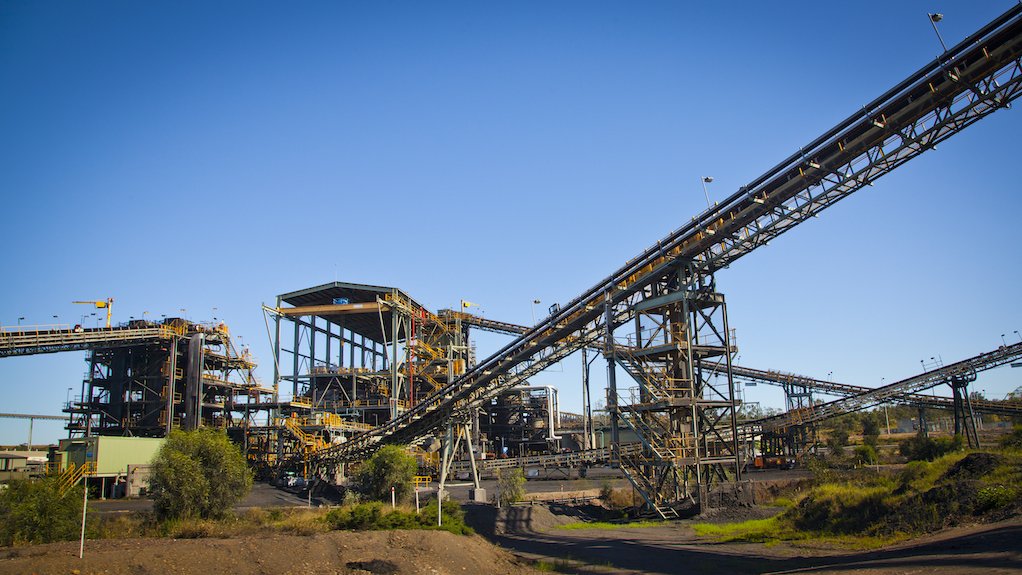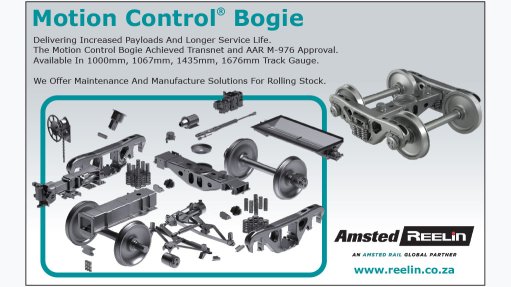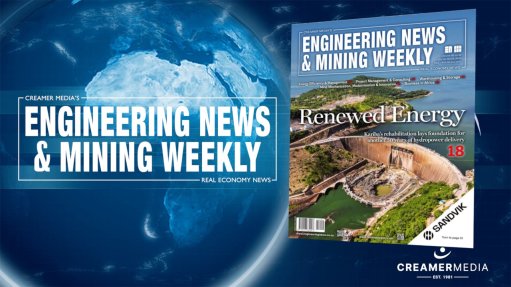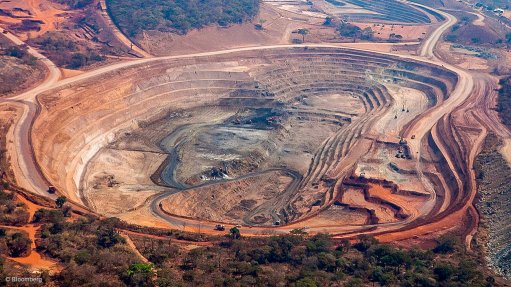Supply chain disruptions have hit hard – what can be done to futureproof mining projects and operations?
The last two years have presented numerous challenges to global supply chains, including for the resources sector, hampering the ability of sourcing managers to secure supply or to do so at reasonable cost. Single-source models have become defunct, while issues with supplier health, supply chain visibility and adequate buffer-inventory have become hot-button issues.
Therefore, effectively securing inbound supply from key global export markets has become more important in these uncertain times. While there may be numerous challenges that are disrupting global supply chains, immense value can still be achieved by getting global sourcing right. Axis Group International, an Imperial company, has supported mining projects and operations with global procurement and supply chain solutions for over 20 years. We share insights on how to proceed with global procurement in the current complex environment where challenges such as movement restrictions have become the norm.
Unprecedented levels of supply chain disruption
Although Covid-19 remains a primary cause of many of the recent global supply chain woes, the converging of numerous factors further exacerbates the ongoing issues. Rebounds in demand, production constraints, raw material shortages, increasing commodity prices, labour shortages, port congestions, a dearth of containers, skyrocketing shipping costs, rising energy prices, and changing geopolitical dynamics such as the ongoing war in Ukraine have all contributed to disrupting our interconnected global supply chains. China’s rising Covid infections presents the latest shock to a fragile global supply chain environment. Moreover, two factors stand out that create significant challenges for the mining industry:
Travel restrictions make it difficult to tap global supply
Restrictions to international travel due to Covid-19 are still significant, especially for some countries. Despite most of the world opening up, China maintains a zero-Covid policy that restricts travel both domestically and internationally. This is a major concern for the mining industry as China is one of the largest exporters of mining-related equipment, hence limiting the ability to discover top-tier suppliers and perform appropriate supplier engagement and quality management activities such as supplier audits, QA/QC and expediting.
Additionally, beyond the human tragedy, the Russia-Ukraine war has also created a unique and challenging global sourcing environment. With Europe being a major hub for high-technology equipment and technical machinery, further escalation of the conflict can disrupt trade from this region, impacting mining operations worldwide.
Lingering logistics challenges exacerbate levels of risk
Port congestions at most major ports around the world have resulted in delays in expected arrivals, as well as increases in supply chain costs. Moreover, global shipping experienced numerous impactful events in 2021, such as the Suez Canal blockage, closures of two of China’s major ports of Shenzhen and Ningbo due to Covid outbreaks, and US port congestion in the latter part of the year. This resulted in average vessel delays increasing from about 4.1 days in 2019 to 6.9 days in 2021. The depth and breadth of these disruptions are being felt across all regions and industries – and mining supply chains have not been spared.
Gaining advantage despite increasingly complex global supply chains
It is imperative that procurement and supply managers in the resources sector know how to successfully navigate the current environment.
Leverage strategic intelligence and ensure prudent risk monitoring
These are uncertain times and volatility is a common factor for all. Top supply teams should have access to the right information early to support decisions and navigate the risk. It is crucial to have a good risk monitoring dashboard with real time (and forward looking) information about risky regions, markets, and supply clusters; problematic routes; raw material availability; price trends; and an array of other variables. A very tall order, but this is precisely what high performance teams do well.
This would enable a risk matrix that measures and tracks key risks, probabilities, and appropriate response plans. These processes and tools have never been more important in order to ensure an agile supply capability.
Utilize in-market partners to identify top-tier suppliers, perform QA/QC, expediting and logistics, and to provide agility on the ground
Despite travel restrictions in major export markets such as China, partners with on-the-ground resources can perform necessary tasks to ensure that appropriate suppliers are selected. Limitations such as language barriers or lack of information from secondary research can hinder sourcing managers’ ability to identify the right fit for their sourcing needs. For example, an online pre-qualification survey is not enough when selecting suppliers for high-value capital equipment. Factory visits, supplier audits, and prequalification are just some of the services the right partner can expertly do.
The right partner on the ground can help execute all the above seamlessly. Since high-value capital goods require multiple inspections throughout the manufacturing cycle, an on-the-ground, cost-effective solution to provide on-site shop floor quality supervision and testing, project progress expediting, packaging, and logistics management, among others is vital. This will enable much-needed agility in a challenging, constantly changing environment.
Effectively leverage China and new alternative global supply markets
China’s role as the largest global supplier should be appreciated; however, there are several emerging markets that have grown in the rankings amongst the top global exporters. Mexico, Vietnam, India, Poland, Czechia, and Turkey, to name a few, have steadily increased their share of global exports, and are continuing to challenge the traditional export leaders. Moreover, successful global procurement requires making smart ‘supply cluster & category’ choices:
- Match appropriate categories dynamically to local procurement options, incumbent global suppliers, and emerging new alternative global supply markets
- Get the right balance between responsible inclusive local procurement and global procurement
- Do not sacrifice or cut corners when it comes to ESG goals
Accurate demand planning and inventory management practices must be followed along the entire value chain
Given the various logistics and supply challenges faced by companies around the world, proper demand planning and inventory management is crucial for ensuring continued operations and profitability. For mining projects and operations in particular, where delays in construction or interruptions during operations can cost companies millions of dollars in lost revenue in the blink of an eye, understanding what are the critical product categories, which are the best supply markets, who are the best suppliers, how long are the sourcing lead times, and what are the category life spans (for capital equipment) or depletion rates (for Opex/MRO) enable a smarter, more optimised sourcing plan.
Furthermore, setting up access to supply from strategic hubs and robust monitoring around relevant inventory levels help companies build up the right buffer stock for critical categories, and mitigate risks from unforeseen incidents or delays.
Good supply chain and integrated logistics management and real-time monitoring
Covid-19 has led to increased border controls and more complicated customs regulations and procedures, resulting in longer wait times, and lack of capacity for long-haul and last-mile deliveries. The number of vessels, sailings, departure schedules, and routes have all shifted and become more unpredictable. This has led to revisiting the current logistics operating models to secure supply and increase efficiency. This would require an estimate of available logistics options, available capacity, and costs. Also, an understanding of the different logistics capacities by mode and their associated trade-offs is essential. Be flexible to change mode of transport and prebook air/rail/truck capacity to minimize exposure to potential cost increases. Collaborating with best-in-class partners is required y to leverage scale, networks, and information.
For large projects and companies with complex supply chains, integrated logistics control towers can provide real-time visibility and mitigation. Moreover, going beyond just tracking freight and actively monitoring a wide range of metrics which might stall or delay delivery like sea and airport congestions, closures, spot prices of sea and air freight, average delay in origin, transit ports, new customs regulations, border closings, and quarantine periods has become extremely valuable. This comprehensive approach will help not only to meet current logistics needs, but also to appropriately plan for rapidly evolving conditions.
Final Word
What is more important – risk or cost?
COVID-19 and its ongoing effects have disrupted supply chains globally, making it very difficult to balance the risk-cost equation. Lead times and freight prices have increased like never before and, in the current scenario, it has become absolutely essential for companies to have the right measures in place to secure their supply while minimising the likelihood of negative supply chain impacts. In many ways, the focus has shifted from ‘low cost’ to ‘low risk’, but the best companies are able to combine these objectives in their supply chain management.
Some companies – that have strong leadership, good culture, and the right organisational DNA - have already seized the opportunity to reset their supply chains to become more efficient, effective, and resilient to future disruptions. Others have been completely overtaken by events and are desperately trying to cope and catch up. What is clear is that procurement and supply chain has become a key value driver for mining companies around the world.
Imagine the entire world as your supply marketplace
Axis Group Global Procurement & Supply has supported mining projects and operations worldwide for over 20 years. Our solutions are truly integrated and span the entire international value chain from source to final supply – including analytics, sourcing, procurement, supplier performance management, quality management, inspection, expediting, and logistics.
If your project or operations are challenged by unacceptably high costs, extended lead times, or supply risk, we can support. Reach out to Axis Group International in Australia, Asia, or Africa at solve@axisgroup-international.com.
Article Enquiry
Email Article
Save Article
To advertise email advertising@creamermedia.co.za or click here
Press Office
Announcements
What's On
Subscribe to improve your user experience...
Option 1 (equivalent of R125 a month):
Receive a weekly copy of Creamer Media's Engineering News & Mining Weekly magazine
(print copy for those in South Africa and e-magazine for those outside of South Africa)
Receive daily email newsletters
Access to full search results
Access archive of magazine back copies
Access to Projects in Progress
Access to ONE Research Report of your choice in PDF format
Option 2 (equivalent of R375 a month):
All benefits from Option 1
PLUS
Access to Creamer Media's Research Channel Africa for ALL Research Reports, in PDF format, on various industrial and mining sectors
including Electricity; Water; Energy Transition; Hydrogen; Roads, Rail and Ports; Coal; Gold; Platinum; Battery Metals; etc.
Already a subscriber?
Forgotten your password?
Receive weekly copy of Creamer Media's Engineering News & Mining Weekly magazine (print copy for those in South Africa and e-magazine for those outside of South Africa)
➕
Recieve daily email newsletters
➕
Access to full search results
➕
Access archive of magazine back copies
➕
Access to Projects in Progress
➕
Access to ONE Research Report of your choice in PDF format
RESEARCH CHANNEL AFRICA
R4500 (equivalent of R375 a month)
SUBSCRIBEAll benefits from Option 1
➕
Access to Creamer Media's Research Channel Africa for ALL Research Reports on various industrial and mining sectors, in PDF format, including on:
Electricity
➕
Water
➕
Energy Transition
➕
Hydrogen
➕
Roads, Rail and Ports
➕
Coal
➕
Gold
➕
Platinum
➕
Battery Metals
➕
etc.
Receive all benefits from Option 1 or Option 2 delivered to numerous people at your company
➕
Multiple User names and Passwords for simultaneous log-ins
➕
Intranet integration access to all in your organisation





















